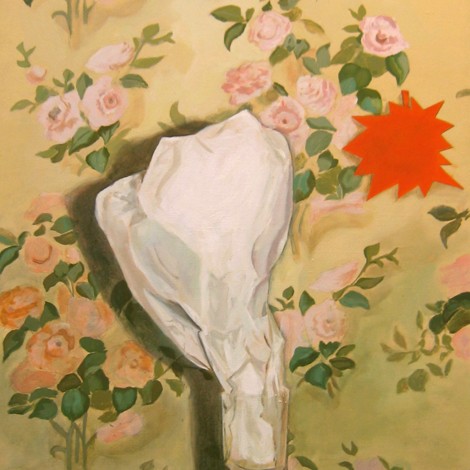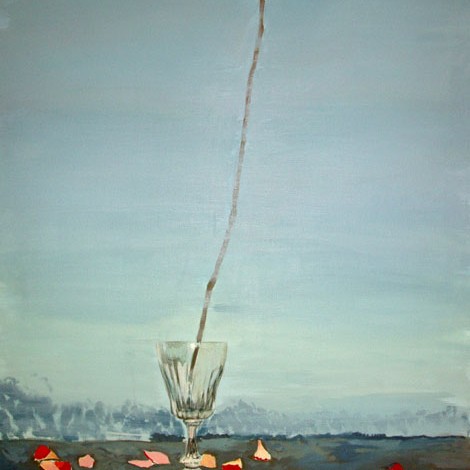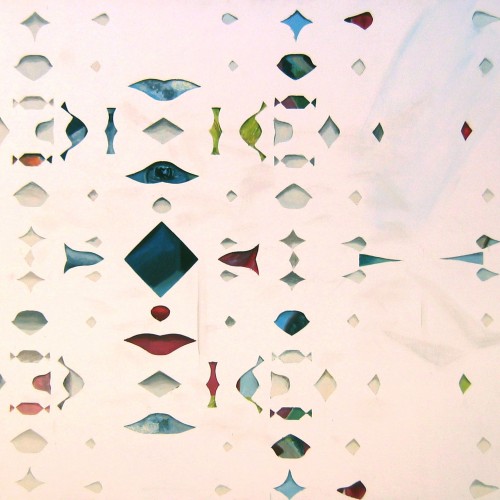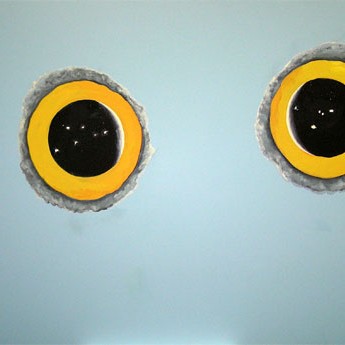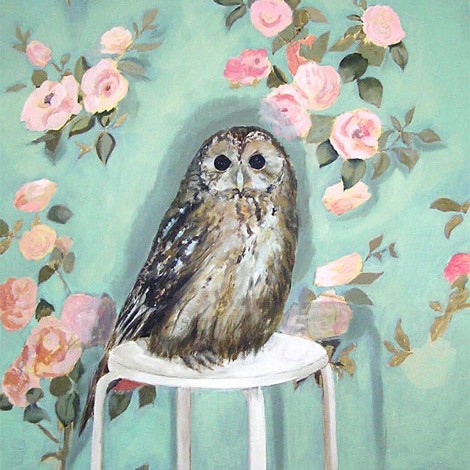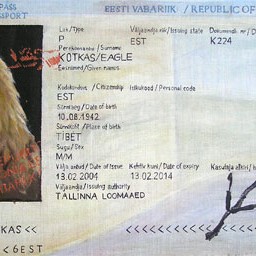For Andrei Maksimjuk, a painting is like a huge container that the artist fills with his perceptions about the world order and the way things are, and then, cunningly smiling, lays it in front of a viewer. At the same time Andrei uses skills of a film director and treats the surface of a painting like a screen, which to project his ideas on. What is the situation like in Maksimjuk's paintings - films? What should you make of works on which, flying in the air, Rubik's cubes, empty-eyed owls, owl's eyes, floating in void, are featured, and roses, roses, and more roses?
In many ways the figurative language of Maksimjuk's painitngs seems to have risen from the artist's earlier studies and cultural context in which he was brought up. Andrei is a Russian, born in Estonia, who, before he got to painting, studied fashion and textile at the College of Applied Art, Estonian Art Academy. His attraction to fashion, style and sparkling lights leaves traces on his creation. He is inspired by glittering glamour, flickering lights and surrounding decorations; moments, when hundreds of eyes are focused on a single spot; effective looking, but hollow items with posh drapings in the background; majestic but short - term beauty.
The central pictures on the exhibition „All about Roses“ are paintings “Cinema Magic I“ and „Cinema Magic II“ that share nearly same composition. The format of these works is suspiciously similar to a wide screen, (the forteller of cultural triumph of which „The White Square“ by Kazimir Malevich is considered), and represents a typical cinema hall at a community centre, with its colourful scenes and a low stage. On a frilled curtain a screen has been hung, on which the film projector shows a rose („Cinema Magic I“) and a peeled orange („Cinema Magic II“) on a white background. In both cases, rose petals or orange peelings, respectively, are lying on the stage. A film is like a fruit that opens to a viewer if you take your time to unpeel it or pick its petals, one by one, until naked.
What concerns Maksimjuk, you can find roses, either in form of blossoms or petals, in almost every painting. In some case they are just dropping in front of the viewer, in other paintings they are present, as a bravado, in a big-petalled wallpaper. In addition to roses as a film, or any other piece of art, there is another frequent guest in Maksimjuk's paintings: the owl. Startling viewers with its hugeness and, due to that, staring them with its enormous eyes, hanging in void, it stands in the highlight of cinemamagical painting group, or in other words, takes the main role.
The exhibition centres around the magical meaning of the cinema and is, primarily, connected to the cinema as an institution, that uses interiors and decorations (and sometimes even smell), owing certain aesthetics: soft plush chairs, heavy curtains, monotonous whirr of the film projector, a famous foreign film star watching the viewers and the viewers watching colourful light, that forms actors and narratives. Maksimjuk's main concern is the cinema, not the film as a form of art. The latter is losing its touch with a real cinema hall nowadays. Or rather, the relationship has simply changed throughout times. Film today mostly spreads on DVDs and videocassettes. Films are easy to download from the Internet and burn on a CD. Watching a film is being transformed from a collective experience into individual experience. Modern multiplex cinemas today are, first and foremost, places where teenagers get together, with its acrid smell of popcorn and half-an-hour commercial bit before each film. But Andrei is, in fact, concerned with cinemas which are small and cosy, with thick carpets, where gentlemen in hats and young ladies in high heels used to walk. Maksimjuk, generating collective experience, is working on the cinema, that used to unite people and where people went, hand in hand with their sweetheart. He would not wish to destroy or refute anything. His paintings would rather glow nostalgic memories, not fashionable deconstruction. He is no rebel nor a radicalist who experiments, he likes to contemplate in the silence of his study and interpret relevant phenomena with means of painiting, and ponder on their essence.
.png)
